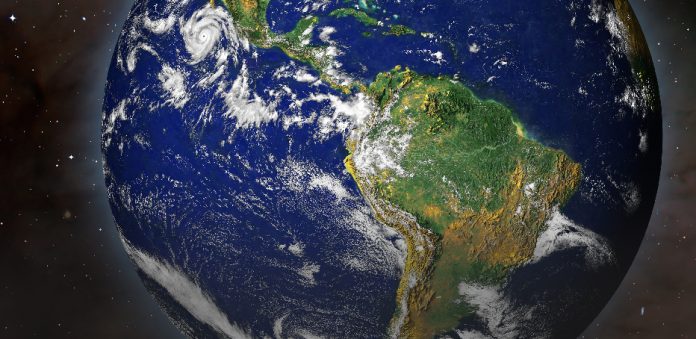By Fabrice Lambert, associate researcher at the Center for Climate and Resilience Research (CR)2. Academic at the Institute of Geography of the Pontificia Universidad Católica de Chile.
“The world is changing: I feel it in the water, I feel it on the ground, I smell it in the air,” said Treebeard about Middle-earth in the book The Lord of the Rings (or Galadriel in the film trilogy). And yes, our world is changing, and so has the latest report from the Intergovernmental Panel on Climate Change (IPCC), but how fast is it changing? And what will be the impacts of these planetary changes?
The Earth itself can give us an answer about the speed and possible effects of these processes. That has been determined by a study published in the scientific journal Nature geoscience that combines paleoclimatic, palaeoecological, and archaeological records and points out that these changes may also occur in the near future, even challenging our human capacity to adapt.
Anthropogenic climate change is known for long-term global warming and progressive changes over decades and hundreds. But, looking in the past, we can find examples of abrupt changes, wherein a few years or decades, a reorganization of the climatic, ecological or sociological system of a region occurred. These abrupt changes are related to “tipping points.” Breakpoints are defined by changes in a system (climatic, ecological, sociological, etc.) that occur much faster than their forcing. A classic example is the progressive melting of the great ice sheets of North America and Eurasia during the last transition from the ice age to the interglacial age, which occurred between 18,000 and 8,000 years ago, which very slowly raised the sea level. When the sea finally reached the threshold of what is now known as the Black Sea (around 9,000 years ago), this entire previously not submerged region was suddenly flooded.
This research, carried out by Brovkin and collaborators (2021), reveals the abrupt changes in the last 30 thousand years on our planet and how these generated cascading impacts in different environmental systems in a short period. It is worth explaining what cascade impacts are: they are those where a cause generates an effect in one part of the system, and this, in turn, is the cause of an effect in another part of the system, and so on. For example, a progressive change in the Earth’s orbit produces an abrupt change in the temperature and precipitation of a region (climate system), which changes the vegetation cover from pastures to desert (ecological system), which produces famine, emigration, and even the collapse of a civilization (social system).
That is how the so-called Earth System works, and this research exemplifies it with the best-documented cases in geological and archaeological records. An emblematic example in paleoclimatic records is the so-called “Dansgaard-Oeschger” events resulting from the ocean and the ice sheets interaction during glacial periods, long-term variations in the South and North Atlantic temperature oceans produced an abrupt rise in the Gulf Stream. During these events, the temperature in the entire Northeast Atlantic region rose dramatically in a few decades (up to 15 ° C in Greenland and several degrees in Europe) before returning to glacial conditions over a few centuries. These changes in the climate system had abrupt repercussions on marine ecosystems in the Atlantic and terrestrial in Europe.
Another example occurred during the African Humid Period (AHP), when the Sahara was green with grass and lakes. However, when long-term natural variations in the planet’s orbit reached a threshold value, this caused a shift in the North African monsoon path within a few decades, reducing rainfall. That led to the end of the AHP, with the drying of lakes, soil erosion, dust emissions, drought, and finally establishing the Sahara desert. These changes, in turn, caused land vertebrates in the region to collapse and modify North African pastoral societies (e.g., the transition from Egypt’s Old Kingdom to the New).
Another example is how constant volcanic eruptions that occurred on the scale of decades were the probable cause of the rapid cooling in the 6th century that caused famine and the social reorganization of Europe (transformation of the Eastern Roman Empire) and Asia (beginning of the Arab Empire).
There are several tipping points in the climate system that humans could cause due to our greenhouse gas emissions in the near future. These include, for example, the abrupt melting of the Greenland and West Antarctic ice sheets, the Gulf Stream ceasing to flow, or the collapse of the Amazon rainforest.
How do we know if we are about to hit one of these abrupt reorganizations or if they are still far off in the future? Many of the abrupt changes were accompanied by early warning signs in the past. For example, before the change in the AHP, several mega-droughts occurred in North Africa. Other abrupt changes were preceded by changes in the statistical characteristics of climatic or ecological variables. Unfortunately, no clear precursor signs of the imminence of a breaking point have been found in paleoclimate records or models. But this does not mean that they do not exist! Although the temporal resolution and spatial coverage of paleoclimatic and palaeoecological records have significantly improved in the last two decades, the existing data is not sufficiently accurate. The ones we need are out there, waiting to be discovered. As Gandalf says, “When in doubt, always follow your nose!”
References
Brovkin, V., Brook, E., Williams, J. W., Bathiany, S., Lenton, T. M., Barton, M., DeConto, R., Donges, J., Ganopolski, A., McManus, J,. Praetorius, S., de Vernal, A., Abe.Ouchi, A., Cheng, H., Claussen, M., Crucifix, M., Gallopin, G., Iglesias, V., Kaufman, D. Kleinen, T., Lambert, F. van der Leeuw, S. Liddy, H., Loutre, MF., McGee, D., Rehfeld, K., Rhodes, R., Seddon, A., Trauth, M., Vanderveken, L. & Yu, Z. (2021). Past abrupt changes, tipping points and cascading impacts in the Earth system. Nature Geoscience, 1-9. https://doi.org/10.1038/s41561-021-00790-5





